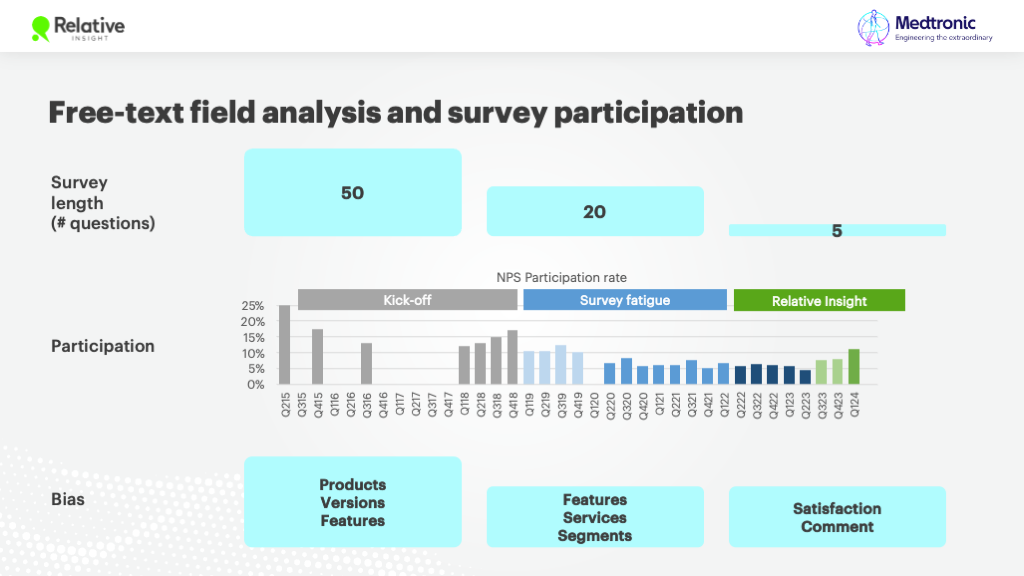5 top tips to maximize open-ended question response quality

Here at Relative Insight, we believe that open-ended, free-text questions are the key to truly understanding your target audience. They allow the respondent to answer in their own words, unprompted by the wording of your question, and allow you to discover ‘unknown unknowns’.
But what are the best ways to maximize the quality of your free-text responses? Here are our top five recommendations to improve your open-ended survey responses.
1. Less is more
Respondent fatigue is real – the more questions you ask, the worse your response rate will be, and the quality of your responses will decrease as the survey goes on. Open-ended questions allow you to ask fewer questions in total, maximising response rates.
Our customer, Medtronic, saw a significant increase in its response rates after reducing the number of questions in its NPS survey from 20 to five. The medical devices brand included a free-text question instead as a ‘catch all’ to then analyze in Relative Insight.

2. Generate a clear metric, and then ask ‘why?’
Combining a clear quantitative question with an open end for the respondent to explain why they answered that way allows you to combine the ‘what’ of the metric with the ‘why’ of the open ends.
You are then able to properly assess why, for example, detractors are detractors and promoters are promoters. This technique directly asks the question you need answering, and avoids the issue of respondents giving a score and then writing a contradictory free text answer.

3. Avoid the throwaway “anything else” open-ended question
At the end of a long survey, the likelihood of a long, considered answer to such a broad question is low. Use open-ended questions as an important, integral part of your survey, not something to bolt on the end in case you’ve forgotten to ask something.
4. Segment positive and negative responses
We see best-in-class results from surveys that have clearly asked for positive and negative feedback in separate questions, for example, “What did you love about your flight today?” and “What could we have done better?”.
By contrast, an “anything else” question encourages a broad spectrum of feedback in the same response, which is harder to analyze at scale.
5. Above all, keep your open-ended questions simple!
Overcomplicated surveys confuse respondents and cause significant fatigue, even if the respondents are incentivized.
The most spectacular survey in the world would have zero respondents – keep that in mind when your stakeholders are asking you to generate ever more complex metrics!
